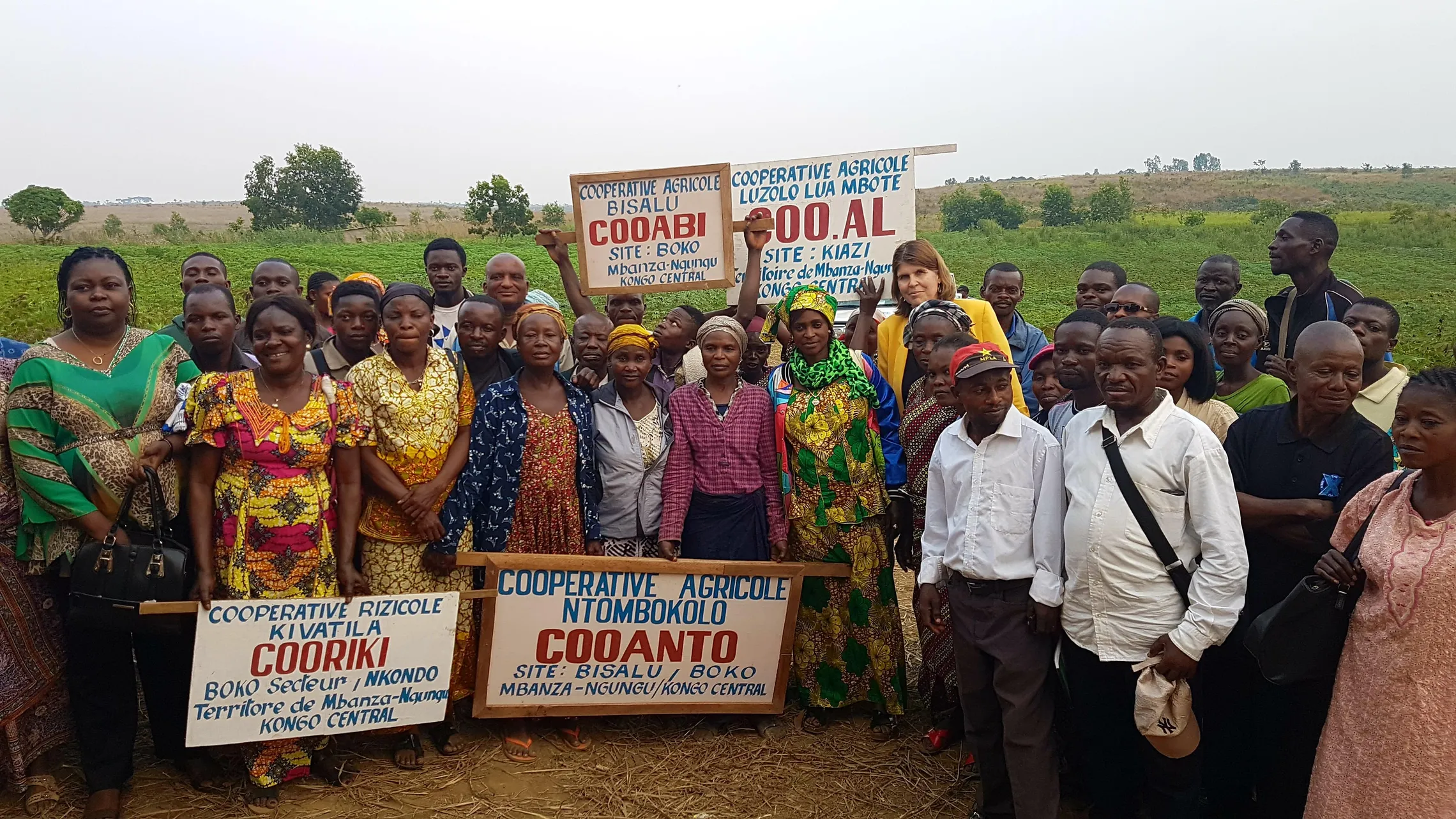Boosting Agricultural Productivity in the DRC

The Congo River glides majestically through the hills of Bas Congo. We are on the road, surrounded by a market. Farmer women expose their produce and little shops display colourful plastic wares and clothes. As always, in the Democratic Republic of Congo (DRC), music is everywhere but today it is interrupted by the cheering fans watching the World Cup on television.
The biggest change since I was last here, is the emergence of mobile banking. MPESA[1] and various mobile phone operators now penetrate rural areas, allowing for inclusive finance and for people to access formal financial systems. The farmers we talk to confirm this, and explain that they use these services for most of their transactions, as this enables them to trade more securely, and to have more predictable incomes.
We are here to visit the Western Growth Pole Project, implemented by the Ministry of Finance of the DRC, with a grant from the World Bank. SNV has been hired to implement the value chain component of the project. We support the production, transformation, and commercialisation of palm oil, rice and cassava farmers. After two years, we have reached 20,000 farmers by providing expertise and training to ensure their increased productivity and employment in the value chains. Our 5 year (ambitious) target is set to impact 50,000 farmers.
The members of the rice farmer cooperative in Kinzau Mvuete (Boma cluster) receive us enthusiastically. We notice that the harvest is going well this year, as we look around the courtyard of the cooperative filled with bags and heaps of rice.
For some time, the farmers in this community have been working together on production and transformation of agricultural supply. The project helps them to improve the commercialisation of the rice by providing farmers with new possibilities to sell rice in larger quantities, and at their pre-set prices. The market is also further driven by the cooperative buying rice from other non-members. The Chair of the cooperative tells us that due to improved business and growth in the organisation, they expect to have sufficient money to buy a new rice huller or a tricycle (motorbike with body), with project match funding[2]. He recites the rules of the project – 70% of investment costs will be a grant provided by the project, while the cooperative will have to pay the remaining 30%. The Chair also describes how the SNV project team has guided the cooperative to help identify microfinance opportunities to finance additional investments in years to come.
Visiting the farmers we feel an entrepreneurial spirit. We are shown demonstration fields of various varieties of cassava, some of which are producing yields which are much higher than those of the traditional crop. Palm oil farmers are discussing a potential multi-year contract with a palm oil factory in Boma. At present, the palm oil the factory uses crude oil imported from Malaysia, but as local farmers invest in improving on the quality of their production, the factory is interested in local sourcing.
Sustaining results is a challenge in the DRC. We hear about past projects that provided some temporary improvements, however these eroded over time. Provincial agricultural extension workers have not been paid for several months by the government, so understandably it is hard to motivate them to follow up with communities. Will this project meet the same faith as others? I am hopeful that by linking various actors in the value chain, we can create markets that sustain themselves after the project has closed. This will require a concerted effort in the coming years to consolidate our work, and it is a challenge we fully embrace.

Farming Cooperatives and Meike van Ginneken.
Reference:
[1] Mobile phone-based money transfer and financing system.
[2] Cooperatives and SME working in the rice, cassava and palm oil value chains can obtain subsidies topping up their own financial inputs (30% for cooperatives, 50% for SME) for financing investments and equipment. These investments contribute to have greater variety and better quality products to sell.